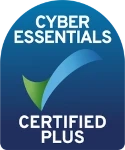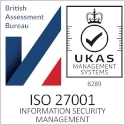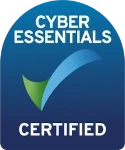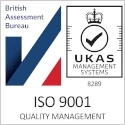15
+
YEARS OF
EXPERIENCE
1000
+
SUCCESSFUL
Projects
80
+
Satisfied
Clients

Assessing Requirements: A Comprehensive Guide by TechCloud IT Services L.L.C.
In today’s rapidly evolving technological landscape, organizations must ensure they have the right tools, processes, and strategies to thrive. A critical component of this success is assessing requirements effectively. At TechCloud IT Services L.L.C., also known as Cloud Technologies, we specialize in helping businesses identify and evaluate their IT requirements to align technology with their strategic goals. This guide will explore the importance of assessing requirements, the steps involved, and how TechCloud can assist you in this process.
Understanding the Importance of Assessing Requirements
Assessing requirements is the foundation upon which successful IT solutions are built. It involves understanding your organization’s needs, goals, and challenges to tailor technology effectively. Here’s why assessing requirements is crucial:
- Alignment with Business Goals: Proper assessment ensures that IT solutions align with your organization’s objectives, helping to enhance productivity and achieve strategic goals.
- Cost-Effectiveness: By identifying what your organization truly needs, you can avoid overspending on unnecessary technology and services, ensuring that your IT budget is spent wisely.
- Enhanced User Satisfaction: Engaging stakeholders in the requirements assessment process leads to better-designed solutions that meet users’ needs, resulting in higher satisfaction and productivity.
- Risk Mitigation: Understanding potential challenges and requirements allows organizations to proactively address risks, ensuring a smoother implementation and operation.
By partnering with TechCloud IT Services L.L.C., you gain access to a systematic approach to assessing requirements, enabling your organization to make informed decisions that drive success.







Steps to Assessing Requirements
Step 1: Define Objectives and Scope
The first step in assessing requirements is to clearly define your objectives and the scope of the assessment. Consider the following:
- Identify Goals: What are the primary goals you wish to achieve through this assessment? Whether improving efficiency, enhancing security, or upgrading infrastructure, having clear goals is vital.
- Determine Scope: Decide on the boundaries of the assessment. Will it cover the entire organization, a specific department, or a particular technology?
Step 2: Engage Stakeholders
Involving stakeholders is crucial for gathering diverse perspectives and insights. Here’s how to engage them effectively:
- Identify Key Stakeholders: Determine who will be affected by the IT solutions or who has valuable insights. This may include management, IT staff, end-users, and external partners.
- Conduct Interviews and Surveys: Use interviews and surveys to gather input from stakeholders. Ask open-ended questions to encourage detailed responses that provide a comprehensive understanding of their needs.
Step 3: Analyze Current Systems and Processes
Understanding your current systems and processes is essential for identifying gaps and areas for improvement. Consider the following steps:
- Inventory Existing Technology: Create an inventory of your current hardware, software, and IT infrastructure. Assess their performance, strengths, and weaknesses.
- Evaluate Processes: Analyze existing workflows and processes to identify inefficiencies or bottlenecks. This helps determine where technology can add value.
- Document Findings: Keep a record of your analysis, including observations about the current state of technology and processes. This documentation serves as a reference throughout the assessment.
Step 4: Identify Requirements
Once you have gathered information from stakeholders and analyzed current systems, it’s time to identify specific requirements. This step involves:
- Categorizing Requirements: Classify requirements into categories such as functional, technical, and operational. Functional requirements describe what the system should do, while technical requirements outline the necessary technology specifications.
- Prioritizing Requirements: Not all requirements carry the same weight. Work with stakeholders to prioritize requirements based on their importance and impact on business goals.
Step 5: Develop a Requirements Document
Creating a formal requirements document is a critical step in the assessment process. This document serves as a roadmap for decision-making and implementation. It should include:
- Executive Summary: Provide a high-level overview of the assessment, including objectives, scope, and key findings.
- Detailed Requirements: List all identified requirements in detail, categorized and prioritized. Include specific examples where necessary to clarify expectations.
- Acceptance Criteria: Define the criteria that must be met for each requirement to be considered successfully implemented.
Step 6: Review and Validate Requirements
Before finalizing the requirements document, it’s essential to review and validate the findings with stakeholders. This step ensures accuracy and alignment. Here’s how to proceed:
- Hold Review Meetings: Organize meetings with key stakeholders to present the requirements document. Encourage feedback and discussions to address any concerns or misunderstandings.
- Revise Document: Incorporate feedback and revisions to finalize the requirements document. Ensure that all stakeholders agree with the finalized version.
Step 7: Implement and Monitor
After validating requirements, the next step is to implement the solutions based on the requirements. During this phase, consider:
- Engage Implementation Teams: Collaborate with your IT team or external partners to implement the solutions effectively. Ensure that everyone understands their roles and responsibilities.
- Monitor Progress: Continuously monitor the implementation process to ensure that it aligns with the requirements. Use project management tools to track progress and identify any deviations.
IT Setup for New Business
Set up a secure, scalable IT infrastructure for your new business, ensuring efficiency, compliance, and future growth.Support and Maintenance
Get ongoing IT support and maintenance to ensure system stability, security, and peak performance for your business.Procurement, licensing and lead times
Streamline IT procurement with expert guidance on licensing, costs, and delivery timelines to avoid delays.
Benefits of Partnering with TechCloud IT Services L.L.C.
Choosing TechCloud IT Services L.L.C. for your requirements assessment brings several advantages:
- Expertise: Our team of experienced professionals has a deep understanding of various industries and technologies, enabling us to assess your requirements accurately and effectively.
- Tailored Solutions: We recognize that each organization is unique. Our assessment process is customized to fit your specific business needs and goals.
- Comprehensive Approach: Our holistic approach ensures that we consider all aspects of your IT environment, from technology to processes, leading to well-rounded solutions.
- Continuous Support: After the assessment, we provide ongoing support and guidance throughout the implementation process, ensuring a smooth transition and successful outcomes.
Conclusion
Assessing requirements is a critical step in aligning your IT solutions with your business goals. By following a structured approach and involving key stakeholders, organizations can identify their needs and ensure they invest in technology that drives success. Partnering with TechCloud IT Services L.L.C. provides you with the expertise and support necessary for effective requirements assessment, enabling you to make informed decisions and achieve your strategic objectives.
If you’re ready to take the next step in your IT journey, contact Cloud Technologies today to learn more about our requirements assessment services.
As a result of increasing number of business expanding to the United Kingdom market we are offering services of Assessing requirements in London

answer time
satisfaction
score
on initial call
same business
day










